We are facing with an strange error with localization of Required attribute.
We have the following code:
public class AnswersGroupViewModel
{
public int IDAnswerGroup { get; set; }
public int IDEvaluator { get; set; }
public List<AnswersViewModel> Answers { get; set; }
}
public class AnswersViewModel
{
public string Text{ get; set; }
[Required(ErrorMessageResourceName = "RequiredMessage", ErrorMessageResourceType = typeof(Resources.Language))]
public int IDAnswer{ get; set; }
}
The problem is that the right translation of "RequiredMessage" is not being picked up from resource file, although it is present (we have RequiredMessage on both spanish and russian resource files).
Attributes like Display are working and being translated, but seems to be a problem with the Required attribute.
Here is an example image:

Error is shown with a @Html.ValidationMessage
Thanks in advance for your help.